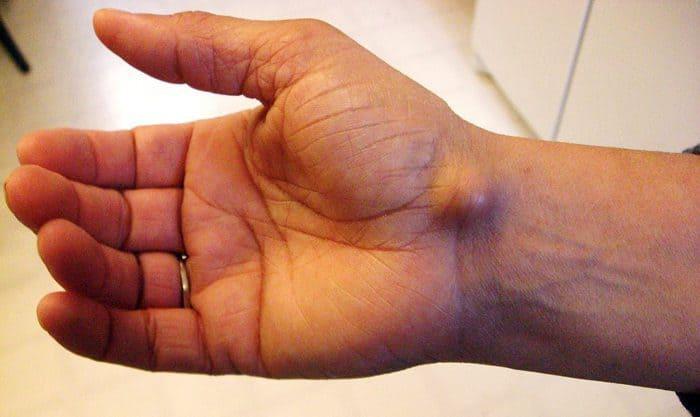A Baker’s cyst, also known as a popliteal cyst, is a fluid-filled swelling that develops at the back of the knee. Baker’s cyst is named after the British surgeon who first described it, Dr. William Morrant Baker. This condition can cause discomfort, pain, and limited mobility. In this comprehensive guide, we will explore the causes, symptoms, and treatment options for Baker’s cysts.
Understanding Baker’s Cyst
A Baker cyst is a buildup of joint fluid (synovial fluid) that forms a swelling behind the knee. This fluid-filled sac can cause various symptoms, including pain in the knee and calf, a build-up of fluid around the knee, and occasional clicking or locking of the knee joint. However, in some cases, a Baker’s cyst may not cause any noticeable symptoms other than the fluid-filled swelling at the back of the knee.
Causes of Baker’s Cyst
Baker’s cysts can be caused by various factors, including knee injuries and underlying health conditions. In adults, degenerative conditions of the knee, such as osteoarthritis, are commonly associated with the development of Baker’s cysts. Other inflammatory joint diseases like rheumatoid arthritis and gout can also contribute to the formation of these cysts. In children, Baker’s cysts often arise as a primary condition from a herniated posterior knee joint synovium/capsule.
Symptoms and diagnosis
The most common symptom of a Baker’s cyst is the presence of a bump or swelling behind the knee. Other symptoms may include knee pain, stiffness, and limited range of motion. In some cases, the cyst may rupture, causing sharp pain, swelling, and redness in the calf. It is important to differentiate a Baker’s cyst from other conditions such as a blood clot or tumor. A healthcare provider can diagnose a Baker’s cyst through a physical examination of the affected knee and may recommend imaging tests such as X-rays, ultrasound, or MRI scans (Magnetic Resonance Imaging) to confirm the diagnosis and rule out other conditions.
Treatment options
Non-surgical treatment options
Pain management
Pain management is an essential aspect of treating Baker’s cysts. Over-the-counter non-steroidal anti-inflammatory drugs (NSAIDs) such as ibuprofen or acetaminophen can help alleviate pain and reduce inflammation. Your healthcare provider may prescribe stronger pain medications if necessary. One treatment option is to inject corticosteroid medication directly into the affected knee to help reduce swelling and inflammation.
Physical therapy
Physical therapy plays a crucial role in the treatment of Baker’s cysts. A physical therapist can develop a customized exercise program to strengthen the muscles around the knee, improve flexibility, and enhance joint stability. Physical therapy may include a combination of stretching exercises, low-impact activities, and range-of-motion exercises.
RICE Method
The RICE method (Rest, Ice, Compression, Elevation) can provide relief and promote healing for Baker’s cysts. Resting the affected leg and avoiding activities that aggravate the cyst is important to prevent further inflammation. Applying ice packs to the knee for 15-20 minutes several times a day can help reduce swelling. Compression with an elastic bandage can provide support and reduce fluid accumulation. Elevating the leg above heart level can assist in draining excess fluid from the cyst.
Compression and elevation
The use of compression garments, such as knee sleeves or braces, can provide additional support to the knee joint and help alleviate symptoms associated with Baker’s cysts. Elevation of the affected leg can reduce swelling and promote fluid drainage.
Surgical treatment options
Aspiration
In some cases, your healthcare provider may recommend aspiration of the Baker’s cyst. During this procedure, a needle is inserted into the cyst, and fluid is withdrawn using a syringe. This can provide temporary relief from symptoms and reduce the size of the cyst. The fluid may be sent for analysis to rule out other underlying conditions.
Excision
Surgical excision is considered when conservative treatments fail to provide relief or if the cyst is particularly large or causing significant discomfort. The surgeon removes the entire cyst through a small incision at the back of the knee. This procedure is typically performed under local anesthesia, and recovery time may vary depending on the size of the cyst and the individual’s overall health.
Arthroscopic treatment
Arthroscopic treatment involves using a small camera and specialized instruments inserted through tiny incisions to visualize and treat Baker’s cyst. The surgeon can remove the cyst, repair any underlying damage, and address associated conditions such as meniscal tears or osteoarthritis. Arthroscopic surgery typically results in less scarring and faster recovery compared to open surgery.
Synovectomy
In rare cases, a synovectomy may be performed to remove the synovial membrane responsible for producing the excess fluid that forms the cyst. This procedure is usually reserved for individuals with chronic or recurrent Baker’s cysts and underlying conditions such as rheumatoid arthritis.
Complications and outlook
While Baker’s cysts are generally benign, complications can arise in certain situations. Rupture of the cyst can lead to additional symptoms and complications, such as nerve damage or compartment syndrome. It is important to seek medical attention if you experience severe pain, swelling, or other concerning symptoms. With proper diagnosis and treatment, the outlook for Baker’s cysts is generally favorable. Most cysts will resolve with conservative management and addressing the underlying causes.
Preventive measures
While it may not be possible to prevent the development of Baker’s cysts entirely, some measures can help reduce the risk. Avoiding knee injuries and practicing safe physical activities can minimize the chances of cyst formation. Wearing appropriate protective gear, warming up before exercise, and allowing adequate rest and recovery time are essential. Maintaining a healthy weight and managing underlying health conditions, such as arthritis, can also contribute to preventing the recurrence of Baker’s cysts.
Conclusion
Baker’s cysts can cause discomfort and limited mobility, but with proper diagnosis and treatment, most individuals can find relief. Understanding the causes, symptoms, and treatment options for Baker’s cysts is crucial for effective management. If you experience any symptoms or have concerns about swelling behind your knee, consult a healthcare professional for an accurate diagnosis and appropriate treatment plan. By addressing the underlying causes and managing symptoms, you can regain comfort and mobility in your daily life.
Sources
- Baker cyst – Symptoms and causes – Mayo Clinic
- Baker Cyst: Symptoms, Causes & Treatment
- Baker’s cyst – NHS
- Baker’s Cyst – StatPearls – NCBI Bookshelf
Medical Disclaimer
NowPatient has taken all reasonable steps to ensure that all material is factually accurate, complete, and current. However, the knowledge and experience of a qualified healthcare professional should always be sought after instead of using the information on this page. Before taking any drug, you should always speak to your doctor or another qualified healthcare provider.
The information provided here about medications is subject to change and is not meant to include all uses, precautions, warnings, directions, drug interactions, allergic reactions, or negative effects. The absence of warnings or other information for a particular medication does not imply that the medication or medication combination is appropriate for all patients or for all possible purposes.
Related Articles
Can a Baker's cyst go away on its own?
In some cases, a Baker’s cyst may resolve on its own without treatment. However, it is important to have any new lump or swelling evaluated by a healthcare provider to ensure an accurate diagnosis and appropriate management.
Are Baker's cysts cancerous?
No, Baker’s cysts are not cancerous. They are benign growths that result from fluid accumulation in the knee joint. However, it is essential to have any new growth or lump examined by a healthcare professional to rule out other potential causes.
Can I exercise with a Baker's cyst?
Exercise can be beneficial for maintaining joint health and flexibility, but it is important to listen to your body and avoid activities that cause pain or worsen your symptoms. Low-impact exercises like swimming or cycling may be more comfortable than high-impact activities.
Can a Baker's cyst come back after treatment?
While treatment can help alleviate symptoms and reduce the size of a Baker’s cyst, there is a possibility of recurrence. It is important to address any underlying conditions and follow your healthcare provider’s recommendations for ongoing management and preventive measures.
Can I drain a Baker's cyst at home?
It is not recommended to attempt draining a Baker’s cyst at home. Draining should be performed by a healthcare professional using sterile techniques to minimize the risk of infection and other complications.
These are just a few of the most frequently asked questions about Baker’s cysts. If you have further inquiries or concerns, it is always best to consult with a qualified healthcare provider who can provide personalized advice and guidance.






